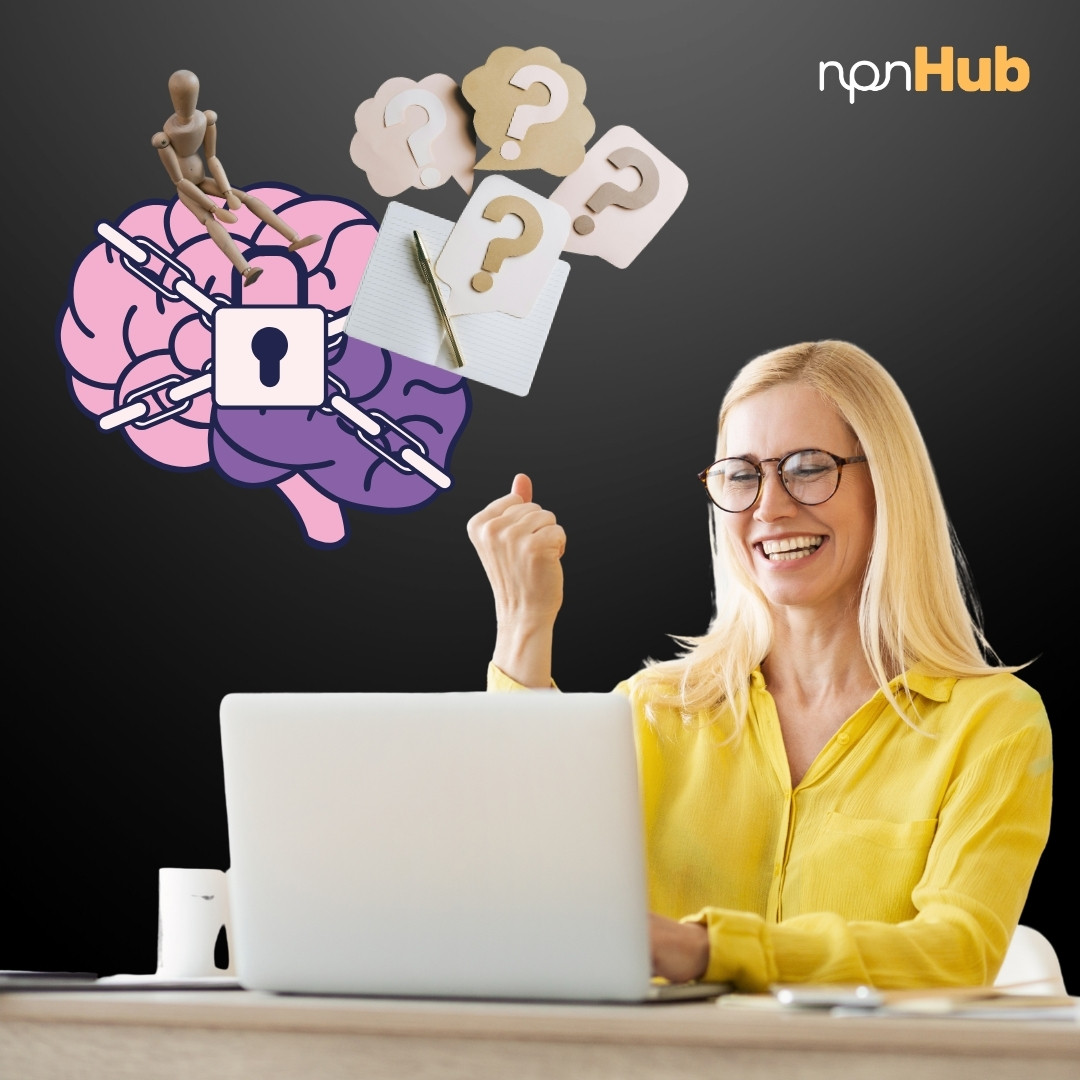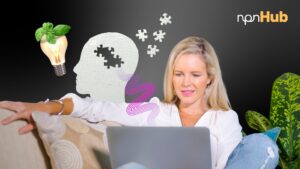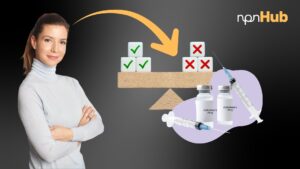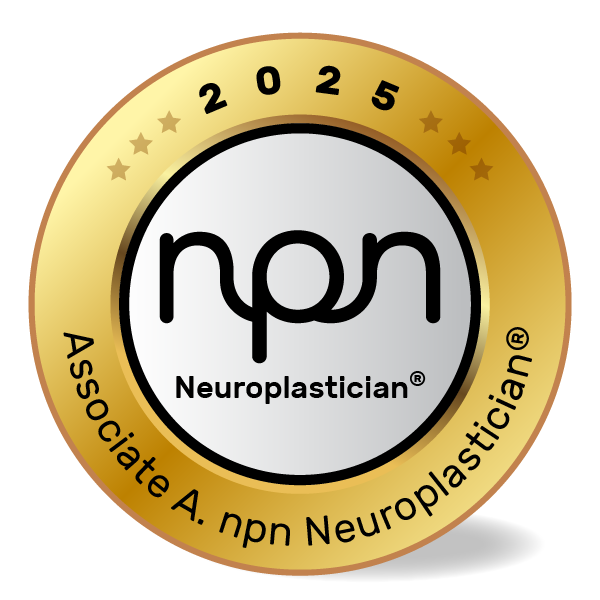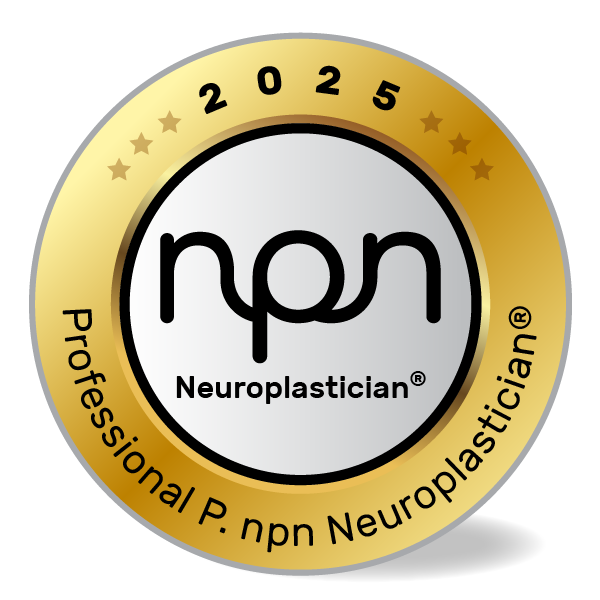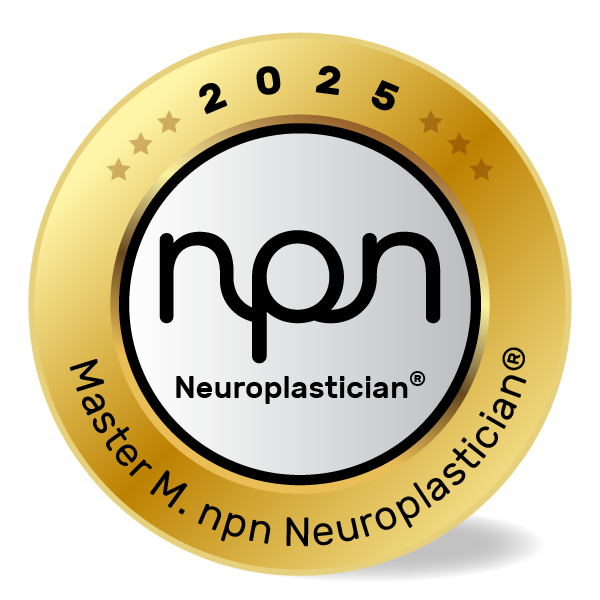How Neuroscience Practitioners and Well-being Professionals Can Help Clients Break Through Mental Barriers
npnHub Editorial Member: David Goodman curated this blog
Key Points
- Mental blocks are natural cognitive barriers that interrupt problem-solving and creativity.
- Brain regions such as the prefrontal cortex and anterior cingulate cortex play a key role in mental flexibility and overcoming blocks.
- Neuroplasticity enables rewiring of neural pathways to reduce the frequency and impact of mental blocks.
- Evidence-based interventions such as mindfulness, cognitive reframing, and targeted practice enhance cognitive flow and resilience.
- Neuroscience practitioners, coaches, and educators can use personalized strategies to help clients build sustainable breakthroughs.
1. What Are Mental Blocks?
Imagine a neuroscience coach working with a client preparing to give an important presentation. The client knows the material well but suddenly freezes, unable to recall key points or think clearly. This frustrating experience, a mental block, is common across many professions and creative pursuits. It’s not a sign of inability but rather a natural pause in cognitive processing.
Mental blocks occur when the brain’s usual flow of ideas or solutions is disrupted by stress, anxiety, fatigue, or internal negative self-talk. Though often experienced as sudden and inexplicable, mental blocks have identifiable neural causes. Dr. Barbara Oakley, a prominent researcher on learning and cognitive barriers, explains that mental blocks are moments when the brain’s focused attention system gets overwhelmed, causing cognitive bottlenecks.
Scientific studies using neuroimaging have helped clarify that mental blocks are related to dysfunction or overload in brain networks responsible for executive function and emotional regulation, including the prefrontal cortex and anterior cingulate cortex (ACC)(Source).
2. The Neuroscience of Mental Blocks
Consider a well-being professional guiding a client through a mindfulness exercise to combat a mental block experienced during creative writing. The client initially struggles to concentrate, but as they learn to calm their racing thoughts and refocus attention, the block starts to dissolve.
This real-world example highlights how brain areas interact during mental blocks. The prefrontal cortex, responsible for working memory and decision-making, often experiences reduced activity during blocks. Meanwhile, the ACC, which monitors conflicts and errors, becomes hyperactive, triggering feelings of frustration or anxiety that further impair thinking.
Neurotransmitters like dopamine play a crucial role here. Dopamine levels influence motivation and cognitive flexibility; low dopamine can worsen mental blocks by reducing the brain’s capacity to switch between tasks or think creatively.
Research led by Dr. Todd Braver at Washington University demonstrates that mental blocks are linked to transient imbalances between brain networks governing cognitive control and emotional responses (Braver et al., 2012). When these systems are out of sync, mental blocks emerge, halting progress.
3. What Neuroscience Practitioners, Coaches, and Well-being Professionals Should Know About Mental Blocks
Imagine a coach working with a client stuck in a chronic mental block during decision-making. Instead of pushing harder, the coach helps the client recognize emotional triggers contributing to the block, such as fear of failure or perfectionism. By addressing these root causes, the coach guides the client towards sustainable breakthroughs.
This illustrates an important principle: mental blocks are rarely “just” cognitive. They intertwine with emotions, motivation, and environment. Neuroscience practitioners need to integrate this holistic understanding when designing interventions.
Common myths include:
- Myth: Mental blocks are a sign of intellectual weakness.
- Fact: They are universal cognitive phenomena affecting all levels of intelligence.
- Myth: You can simply “will” yourself out of a block.
- Fact: Neurobiological mechanisms require targeted strategies, not just willpower.
- Myth: Mental blocks mean permanent inability.
- Fact: The brain’s plasticity allows for change and improvement over time.
Frequently asked questions professionals encounter:
- How can I differentiate between mental blocks and underlying cognitive disorders?
- What role does stress play in causing mental blocks, and how can it be managed?
- Can techniques like cognitive behavioral therapy complement neuroscience-based interventions?
Studies from Stanford University emphasize that interventions targeting both cognitive and emotional systems are most effective in overcoming mental blocks (Stanford Neuroscience).
4. How Mental Blocks Affect Neuroplasticity
Mental blocks influence neuroplasticity by temporarily disrupting the formation of efficient neural pathways. When a person repeatedly experiences blocks in a particular domain, the brain may strengthen avoidance behaviors or maladaptive circuits associated with stress and frustration.
However, neuroplasticity also provides hope: through repeated practice of alternative cognitive strategies and stress management, neural pathways supporting flexibility and resilience can be enhanced. Research by Dr. Michael Merzenich, a pioneer in neuroplasticity, shows that targeted cognitive training can “rewire” the brain to reduce the occurrence of mental blocks and improve fluid thinking (Merzenich, 2013).
By fostering positive neuroplastic changes, practitioners can help clients create new mental habits, transforming blocks into stepping stones for growth rather than obstacles.
5. Neuroscience-Backed Interventions to Overcome Mental Blocks
Why Behavioral Interventions Matter
Mental blocks often arise from a complex interplay of cognitive overload, stress, and negative thinking. Without deliberate strategies, clients may remain stuck, reinforcing unhelpful neural patterns. Practitioners who apply neuroscience-informed behavioral interventions can break this cycle and promote cognitive flow.
1. Mindfulness and Focus Training
Concept: Mindfulness reduces activity in the ACC and amygdala, calming emotional triggers that exacerbate blocks (Tang et al., 2015).
Example: A coach guides a client through breath-focused mindfulness before high-pressure tasks to reset cognitive control.
Intervention:
- Practice 5–10 minutes of breath awareness daily.
- Use grounding techniques during moments of mental block.
- Encourage acceptance of the block without judgment.
2. Cognitive Reframing
Concept: Changing negative self-talk shifts activity from the default mode network (DMN) to executive control areas, enhancing problem-solving (Kross et al., 2014).
Example: A therapist helps a client replace “I’m stuck” with “This is a challenge I can solve.”
Intervention:
- Identify common negative thoughts linked to blocks.
- Develop alternative, positive reframing statements.
- Practice these reframes regularly during tasks.
3. Break Tasks into Smaller Steps
Concept: Smaller, manageable goals reduce prefrontal cortex overload and increase dopamine-driven reward signals (Schultz, 2016).
Example: An educator works with a student overwhelmed by a project, helping set incremental objectives.
Intervention:
- Break complex tasks into 3–5 bite-sized steps.
- Celebrate completion of each step.
- Adjust steps based on client progress.
4. Physical Movement and Brain Breaks
Concept: Moderate exercise boosts dopamine and norepinephrine, improving cognitive flexibility (Ratey, 2008).
Example: A well-being coach recommends short walks during mental fatigue to reset focus.
Intervention:
- Encourage 10-minute movement breaks every hour.
- Incorporate simple stretches or walking routines.
5. Targeted Cognitive Training
Concept: Exercises like working memory training enhance prefrontal cortex capacity and reduce block frequency (Klingberg, 2010).
Example: A neuroplasticity coach assigns brain games tailored to improve executive function.
Intervention:
- Use apps or games focusing on working memory and attention.
- Track progress and adjust difficulty.
6. Key Takeaways
Mental blocks are natural, temporary disruptions in cognitive flow caused by complex brain mechanisms involving executive function and emotional regulation. By understanding the neuroscience behind these blocks, practitioners can design personalized, science-backed interventions that foster neuroplasticity and cognitive resilience. Mental blocks do not reflect fixed deficits but opportunities for growth and brain rewiring.
- Mental blocks affect everyone, not just those struggling cognitively.
- Key brain regions involved include the prefrontal cortex, anterior cingulate cortex, and dopamine pathways.
- Interventions like mindfulness, cognitive reframing, and structured task management help overcome blocks.
- Neuroplasticity enables lasting change and improved cognitive flexibility with the right support.
Embrace mental blocks as part of the brain’s learning curve – and equip your clients with the tools to break through and thrive.
7. References
- Braver, T. S., et al. (2012). Neural Mechanisms of Cognitive Control. Annual Review of Neuroscience, 35, 247–270.https://pubmed.ncbi.nlm.nih.gov/12925284/
- Kross, E., et al. (2014). Cognitive Reappraisal and Neural Systems. Social Cognitive and Affective Neuroscience, 9(8), 1237–1243.https://pmc.ncbi.nlm.nih.gov/articles/PMC4241349/
- Merzenich, M. (2013). Soft-Wired: How the New Science of Brain Plasticity Can Change Your Life. Parnassus Publishing.
- Ratey, J. J. (2008). Spark: The Revolutionary New Science of Exercise and the Brain. Little, Brown.https://www.researchgate.net/publication/232600651_Spark_The_Revolutionary_New_Science_of_Exercise_and_the_Brain
- Schultz, W. (2016). Dopamine Reward Prediction Error Coding. Dialogues in Clinical Neuroscience, 18(1), 23–32.https://pmc.ncbi.nlm.nih.gov/articles/PMC4826767/
- Tang, Y.-Y., et al. (2015). The Neuroscience of Mindfulness Meditation. Nature Reviews Neuroscience, 16(4), 213–225.https://www.nature.com/articles/nrn3916

